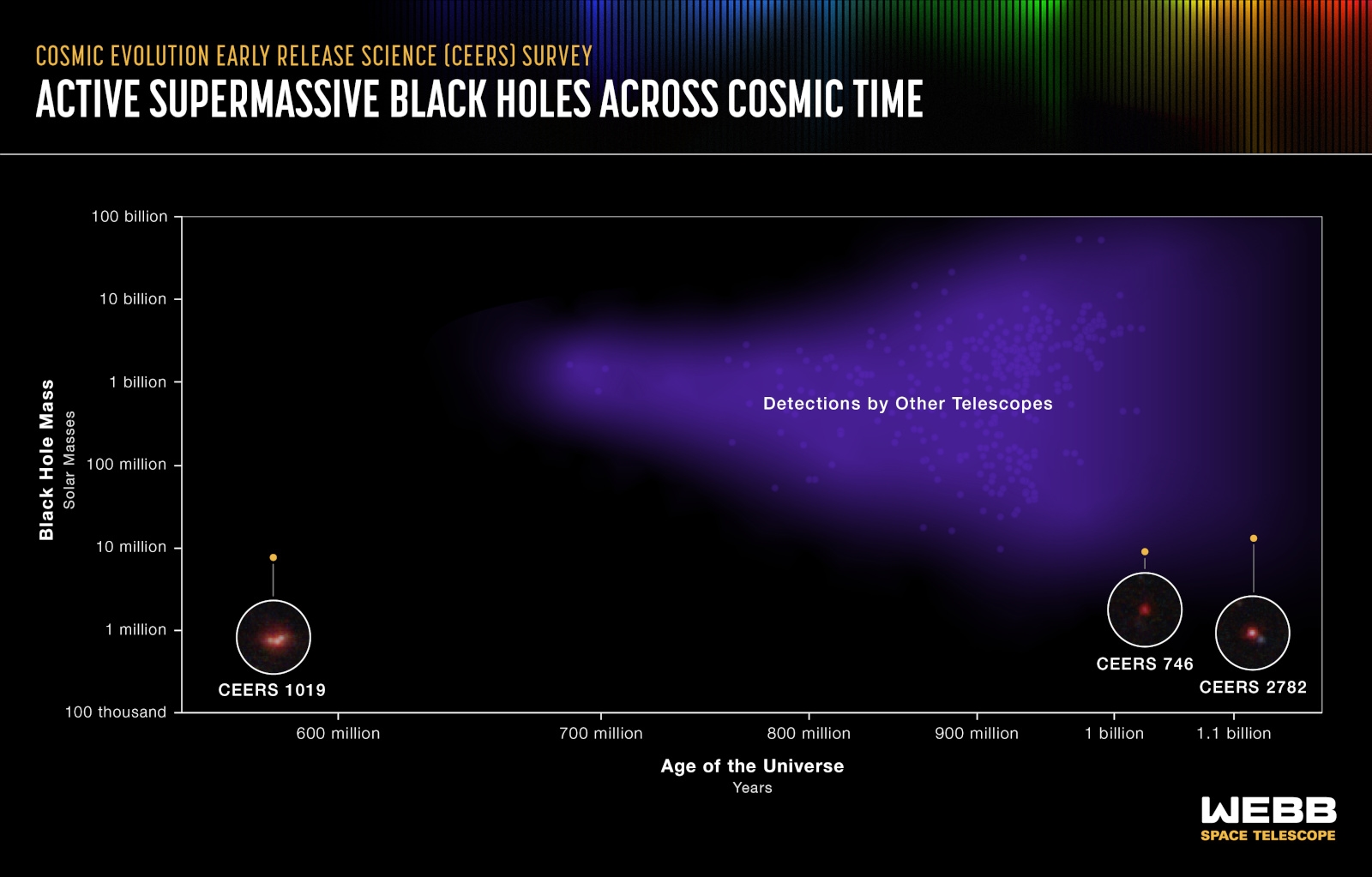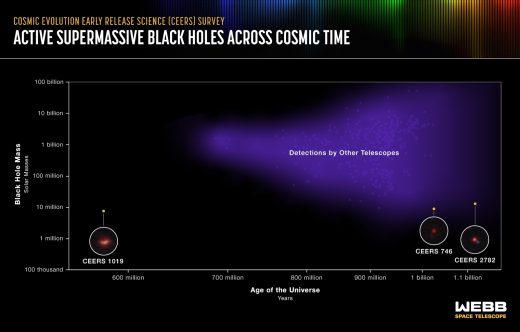James Webb telescope captures the most distant active supermassive black hole yet
James Webb telescope captures ancient galaxies that theoretically shouldn’t exist
The James Webb Telescope has been giving us clearer views of celestial objects and exposing hidden features since it became operational last year. Now, according to a study conducted by an international team of astrophysicists, it may also completely change our understanding of the cosmos.
Upon looking at images taken by the telescope near the Big Dipper, the scientists found six potential galaxies that formed just 500 to 700 million years after the Big Bang. That they could be almost 13 billion years old wasn’t what makes them odd, though, it’s that they could have as many stars as the Milky Way according to the team’s calculations. The scientists explained that they should not exist under current cosmological theory, because there shouldn’t have been enough matter at the time for the galaxies to form as many stars as ours has.
What the scientists saw in the images is a few fuzzy but very bright dots of light that look red to our instruments, indicating that they’re old. Joel Leja, one of the authors of the study, told Space that scientists typically expect to see young and small galaxies that glow blue when peering into the ancient universe, since they appear to us as “objects which have just recently formed out of the primordial cosmic soup.” (Don’t forget that it takes time for light to reach Earth, so we’re essentially looking back in time when we view telescopic images.)
“We looked into the very early universe for the first time and had no idea what we were going to find. It turns out we found something so unexpected it actually creates problems for science. It calls the whole picture of early galaxy formation into question,” Leja said. James Webb previously captured images of even older galaxies that formed around 350 million years after the Big Bang. But they’re tiny and don’t challenge our knowledge of astrophysics.
For these six galaxies to appear old and massive means they were forming hundreds of stars a year shortly after the Big Bang. In comparison, the Milky Way only forms around one to two new stars every year. Further, these potential galaxies are about 30 times more compact in size than ours despite having as many stars.
The scientists admit that there’s a possibility that the fuzzy red dots they saw are something else, such as faint quasars or supermassive black holes. They could also be smaller in reality compared to the projected size the scientists got from their calculations. The team needs more data and to verify their findings through spectroscopy, but they think they could have official confirmation sometime next year.

(25)



